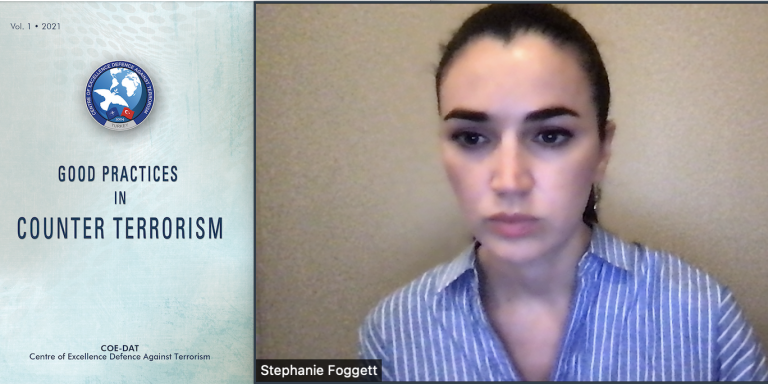From 20-24 September 2021, NATO’s Centre of Excellence Defence Against Terrorism (COE-DAT) organized an online course on ‘Terrorism and Media.’ The main aim of the course was to understand how terrorist organizations use established media to increase public awareness of their ideological goals and to discuss counter-measures that can be developed and in turn employed to counteract terrorists’ use and exploitation of media. Two of The Soufan Center’s fellows delivered lectures on the topic.
Stephanie Foggett, Resident Fellow at The Soufan Center, delivered a lecture on ‘Media & Contemporary Terrorism’ which built upon a chapter published earlier in the year by NATO’s COE-DAT in a publication ‘Good Practices in Counter Terrorism.’ She also delivered a lecture on ‘Gender & Online Extremism,’ which looked at the importance of applying a gender analysis lens to contemporary terrorism and violent extremism, with a particular focus on far-right extremism and white supremacy online. “Extremist movements and terrorist organizations can both reflect the gender norms and power dynamics of the societies around them, as well as socializing and imposing their own gender stereotypes on individuals within their movements,” concluded Ms. Foggett.
Senior Research Fellow Susan Sim, drawing from her background as a former intelligence analyst turned journalist turned diplomat, explained why the news media invariably give terrorist activity great prominence even though the extensive coverage provides terrorists with what they want – a lot more people afraid. In a lecture titled ‘If It Bleeds, It Leads: Turning Public Fear of Terrorism into Public Vigilance,’ she looked at how states can strengthen their counter-terrorism policies by engaging with the media to demonstrate the effectiveness of the government’s efforts, explain the nature of the terrorist threat, and provide people with a clear set of actions they can take to prevent and deal with an attack.
